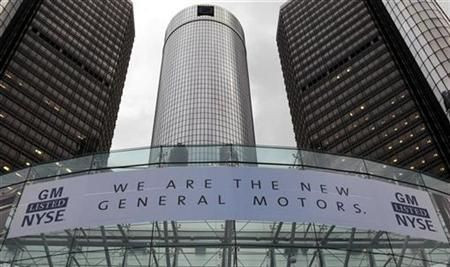GM Responds To Scathing Letter Suggesting It’s Shifting Its Focus To China At US Expense

North America’s largest automaker has taken its share of criticism since the U.S. taxpayer became its largest shareholder following its 2009 bankruptcy. But a letter published in the Wall Street Journal from a Portland, Ore.-based auto industry consultant was, in the view of company officials, a little too scathing to be ignored.
In the letter published last week, Edward Niedermeyer, a former editor of the brassy automotive news blog thetruthaboutcars.com, slammed General Motors Company (NYSE:GM) for its heavy investment in China.
Under the title “Welcome to General Tso's Motors,” the freelancer blasted GM for what he said was the company’s effort to shift manufacturing and research and development to the Middle Kingdom, to use China as a platform for vehicle assembly and export, even sending Chinese-made GM cars back to U.S. showrooms at the expense of American jobs. Further, the author suggested that the company is using cheap credit in the U.S. to sell cars domestically in order to “support its made-in-China production strategy.”
With GM's technology and manufacturing jobs streaming into China even as other automakers invest in the U.S., taxpayers might well wonder what their billions of bailout dollars really bought. Certainly the future that the Obama administration has promised -- one of high-tech green cars designed and built by GM and Chrysler in America for export around the world -- doesn't seem to be forthcoming. Instead, GM has become what one might call America's subprime automaker, increasingly dependent on cheap credit, fueled by the Federal Reserve's near-zero interest rate policy, to support its made-in-China production strategy.
That last point -- suggesting that U.S. car sales are being used to “support” GM’s China operations -- elicited a reply from GM spokesperson Selim Bingol, which was posted Sunday evening on the Wall Street Journal’s website.
Edward Niedermeyer's suggestion that China is the ultimate beneficiary of the U.S. auto rescue doesn't stand up to basic fact-checking, according to GM, which Bingol said was in China long before the economic meltdown of 2008-2009, and not one dollar of U.S. taxpayer rescue money was spent on the company's operations there.
Bingol insisted that money spent in China is generated from GM’s operations there. It’s no small chunk of change, North America’s largest automaker said at the auto show in Shangahi in January, noting that it’s re-investing $11 billion of money from its Chinese operations through 2016 to expand operations in the world’s largest and most rapidly expanding auto market.
Both sides could be more or less right.
As Niedermeyer claims, GM and other U.S. vehicle makers have indeed benefited from low interest rates that is helping to spur a rebound in the U.S. auto market, which was pummeled in 2008 and 2009 and has been clawing back at an accelerated annual rate ever since. And this rebound has given the company the wiggle room to bring back less of its China-generated funds, which has allowed it to expand operations there. Through its China-based business, GM exports vehicles such as the Chevrolet Sail to other markets, including South America and the Middle East. The Sail is manufactured in Yantai, Shangdong province as well as Bogota, Colombia.
However, technically speaking, GM is right to say it has not sent money to China to “support” its operations there, because China’s own auto market is large enough to fund GM’s local expansion. The company has 12 joint ventures, including Shanghai GM, a partnership with China’s No. 1 automaker SAIC Motor Corp. Ltd.
As of January, the U.S. government still held 300.1 million shares of GM, or about 19 percent, making the U.S. taxpayer the largest single shareholder. The U.S. Treasury Department expects to be fully divested by the end of the first quarter of 2014.
© Copyright IBTimes 2024. All rights reserved.






















